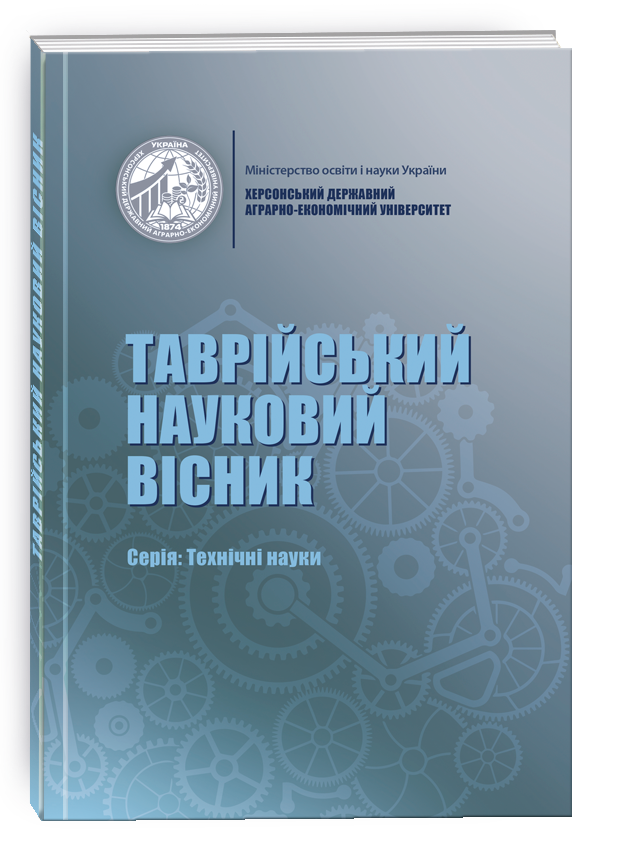DETERMINATION OF THE CONTENT OF ORGANIC ACIDS IN THE CHEMICAL COMPOSITION OF BUCKBUCKTHORN OIL, OBTAINED FROM REGIONAL RAW MATERIALS
DOI:
https://doi.org/10.32851/tnv-tech.2022.4.13Keywords:
regional raw materials, sea buckthorn oil, organic acids, vitamin C, food enrichment.Abstract
The purpose of the work is to determine the content of organic acids in the chemical composition of sea buckthorn oil obtained from regional raw materials and to establish the influence of sea buckthorn oil production technology on the content of biologically active substances. Sea buckthorn is a unique source product for enriching food products with biologically active substances that play a diverse, important role in the vital activity of the body. It has been proven that the content of organic acids and vitamin C is the main variable in the chemical components of sea buckthorn, the phytochemical and nutritional composition of whose berries differs significantly depending on the species, climatic and growing conditions, and the technology of obtaining sea buckthorn oil. This attracts attention from the standpoint of the need to study sea buckthorn, which grows in regional territories. It was established that sea buckthorn oil obtained from the juice contains: organic acids 154.1–167.5 mg%, vitamin C 168-214 mg%. Sea buckthorn oil extracted with refined sunflower oil contains: organic acids 234.5–388.6 mg%, vitamin C 189–243 mg%. The effect of the technology of obtaining sea buckthorn oil from regional raw materials on the content of biologically active substances, such as organic acids, vitamin C, was determined. Based on the results of research, the advantages of oil obtained by the technology of extraction with refined sunflower oil were determined. Such oil contains a larger amount of ascorbic acid and free organic acids. When analyzing the results of research on oil and dry raw materials collected in the Kherson region, it was established that in the case of organic acids, in particular vitamin C, the indicator of quantitative content is affected not only by the production technology, but also by the biological variety of sea buckthorn. It is advisable to intensively continue scientific work on the research of substances that are responsible for the specific biological activity of sea buckthorn oil.
References
Gâtlan A-M, Gutt G. Sea Buckthorn in Plant Based Diets. An Analytical Approach of Sea Buckthorn Fruits Composition: Nutritional Value, Applications, and Health Benefits. International Journal of Environmental Research and Public Health. 2021. № 18(17). Р. 78-86.
Ji M., Gong X., Li X., Wang C., Li M. Advanced research on the antioxidant activity and mechanism of polyphenols from hippophae species-a review. Molecules. 2020. №25. P. 812-917.
Ciesarová Z., Murkovic M., Cejpek K., Kreps F., et al. Why is sea buckthorn (Hippophae rhamnoides L.) so exceptional? A review. Food Res. Int. 2020. № 133. Р. 109-170.
Du J., Xi Y.L., Song C.M. Effect of Sea Buckthorn Powder on Hepatic Lipid Metabolism and Oxidative Stress in Rats. Mod. Food Sci. Technol. 2017. № 33, P. 8–12.
Guo R., Guo X., Li T., Fu X., Liu R.H. Comparative assessment of phytochemical profiles, antioxidant and antiproliferative activities of Sea buckthorn (Hippophaë rhamnoides L.) berries. Food Chem. 2017. № 221, Р. 997–1003.
Yang B., Kallio H. Composition and physiological effects of sea buckthorn (Hippophaë) lipids. Trends Food Sci. Technol. 2002. № 13, Р. 160–167.
Kallio H., Yang B., Peippo P., Tahvonen R., Pan R. Triacylglycerols, glycerophospholipids, tocopherols, and tocotrienols in berries and seeds of two subspecies (ssp. sinensis and mongolica) of sea buckthorn (Hippophaë rhamnoides). J. Agric. Food Chem. 2002. № 50. Р. 3004–3009.
Kuhkheil A., Naghdi Badi H., Mehrafarin A., Abdossi V. Chemical constituents of sea buckthorn (Hippophae rhamnoides L.) fruit in populations of central Alborz Mountains in Iran. Res. J. Pharmacogn. 2014. № 4. Р. 1–12.
Fatima T., Nazir A., Naseer B., Hussain S.Z. Seabuckthorn (Hippophae rhamnoides): A repository of phytochemicals. Int. J. Pharm. Sci. Res. 2018. № 3, Р. 9–12.
Tang X. Breeding in Sea Buckthorn: Genetic of Berry Yield, Quality and Plant Cold Hardiness. University of Helsinki: Helsinki, Finland. 2002. № 2. Р. 47-58.
Marsiñach M.S., Cuenca A.P. The impact of sea buckthorn oil fatty acids on human health. Lipids Health Dis. 2019, №18. Р.19-27.
Kallio H., Yang B., Peippo P. Effects of different origins and harvesting time on vitamin C, tocopherols, and tocotrienols in sea buckthorn (Hippophaë rhamnoides) berries. J. Agric. Food Chem. 2002. № 50. Р. 6136–6142.
Chandra S., Zafar R., Dwivedi P., Prita B., Shinde L.P. Pharmacological and nutritional importance of sea buckthorn (Hippophae). Pharma Innov. J. 2018. № 7. Р. 258.
Renard С. Extraction of bioactives from fruit and vegetables: State of the art and perspectives. LWT-Food Science and Technology. 2018. № 93. Р. 390-395.
Zeb A. Chemical and Nutritional Constituents of Sea Buckthorn Juice. Pak. J. Nutr. 2004. № 3. Р. 99–106.
Xiao-Hua L., Ling-Xue K., Hong-Zhang L. Advances on Effective Compositions of Seabuckthorn. J. Jilin Agric. Univ. 2007. № 29. Р. 162–167.
Villas-Francesca A., Balance J. The potential of sea buckthorn-based ingredients for the food and feed industry – a review. Food process and nutr. 2020. № 17. Р. 20-32.
Ващенко К.Ф. Промислова технологія екстракційних препаратів. ЛНМУ ім. Д. Галицького. 2019. https://studfile.net/preview/9368595/
Бензель І. Л., Дармограй Р. Є., Бензель Л. В. Дослідження вмісту аскорбінової кислоти та вільних органічних кислот у фітосубстанціях бадану товстолистого. Фармац. журн. 2010. № 2. С. 98–101.
Державна Фармакопея України / Державне підприємство «Український науковий фармакопейний центр якості лікарських засобів». Харків: Державне підприємство «Український науковий фармакопейний центр лікарських засобів». 2021. 424 с.






